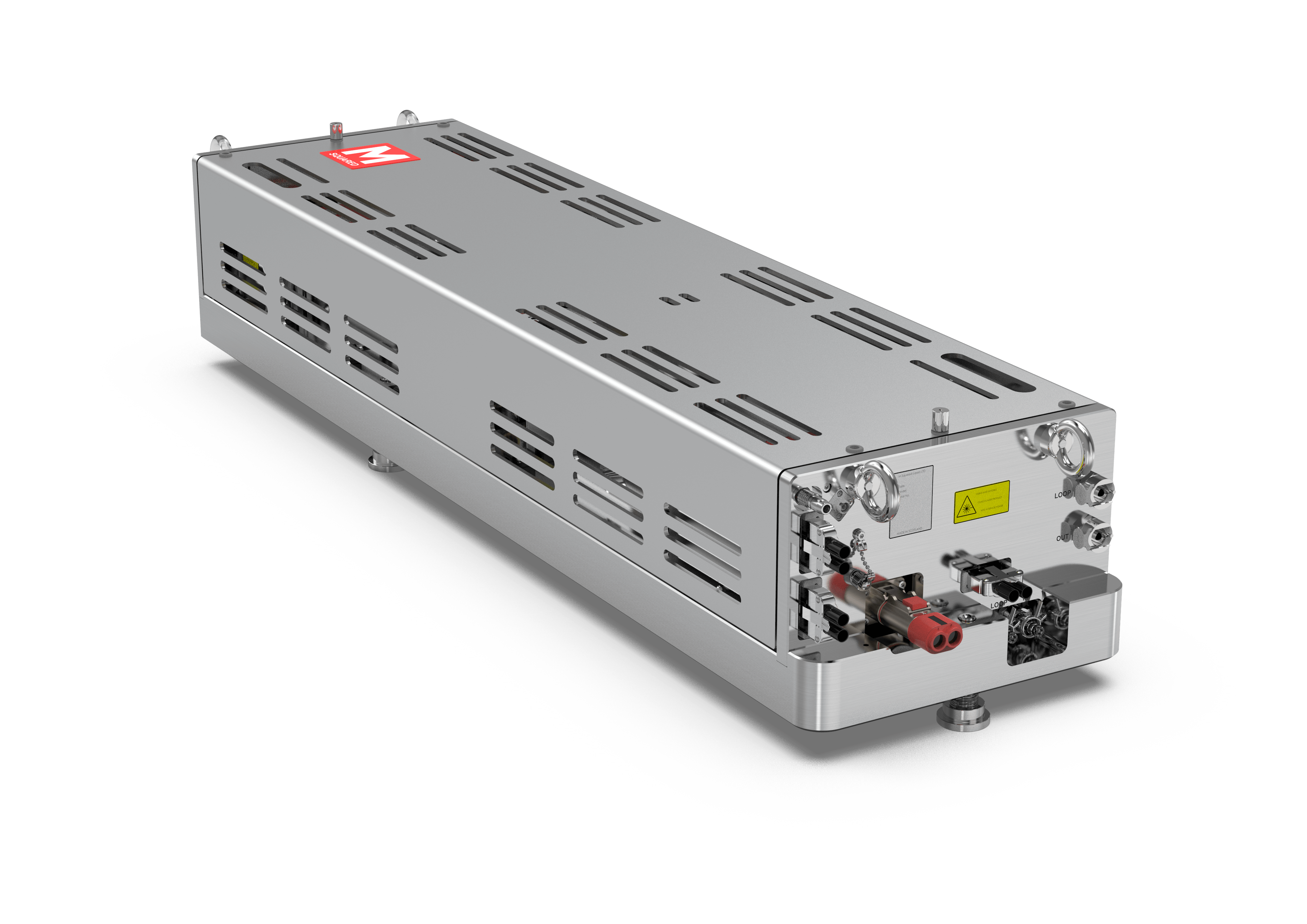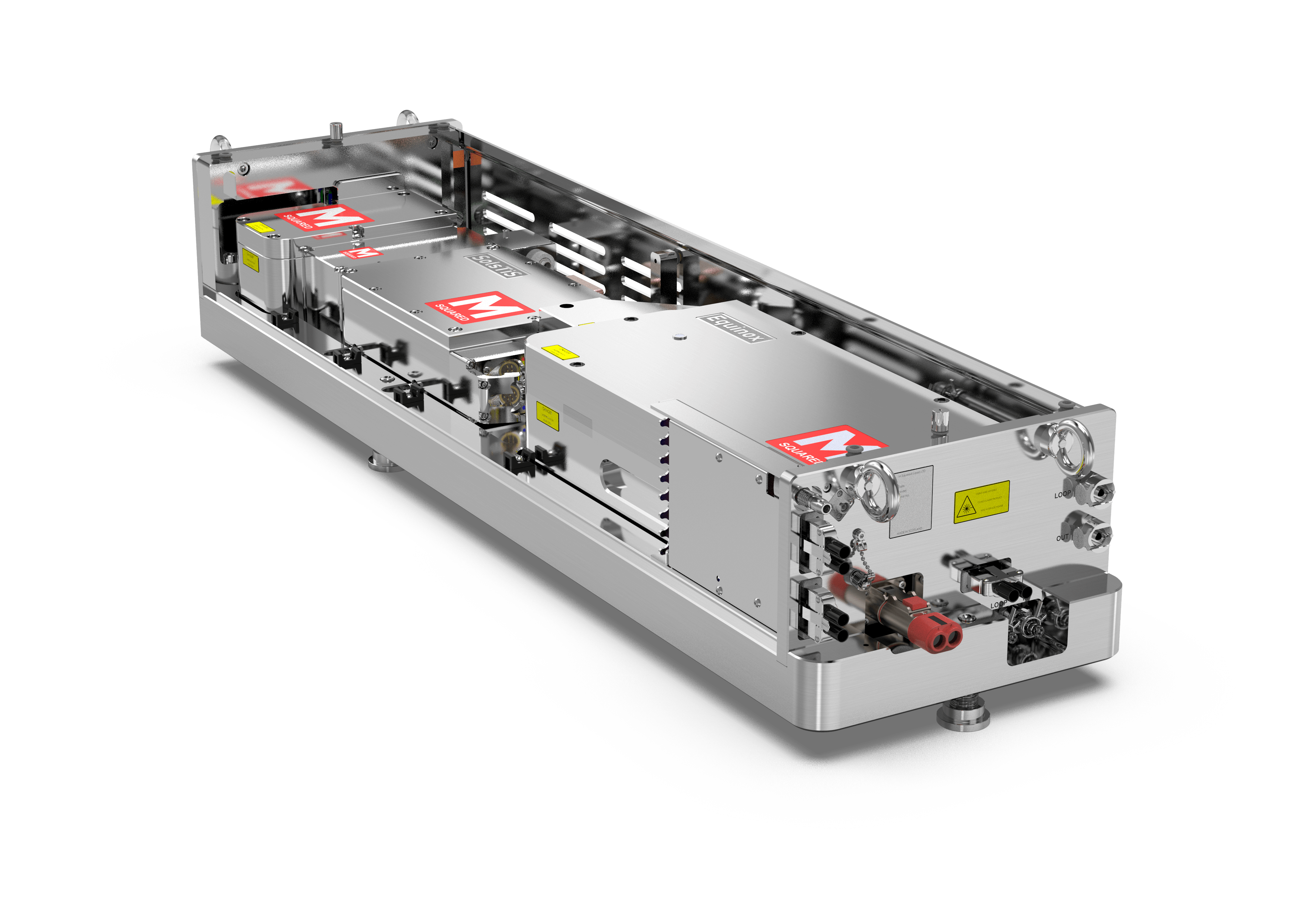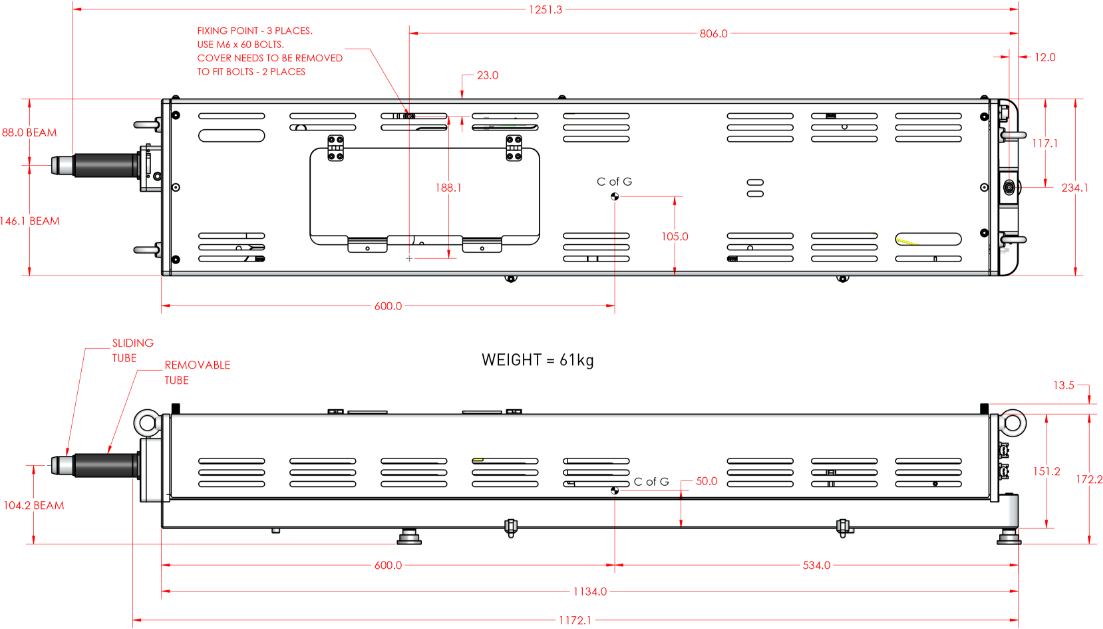


SolsTiS Titan is based on M Squared’s award-winning SolsTiS CW Ti:Sapphire laser platform. It’s a fully-automated, high-power, single-frequency laser operating in the UV and Visible and offers unprecedented stability and reliability. Titan is simple to operate and integrate into diverse industrial and deep-tech application scenarios and delivers dramatic cost savings over legacy laser technologies.
SolsTiS Titan is a fully-automated, hands-free system offering easy integration and a compact footprint. It is simple to install and can be operated by non-specialist users.
Up to 2 W single-frequency output at key wavelengths across the blue and UV, including 413 nm and 364 nm.
Exceptional beam parameters can be optimised for diverse application requirements including semiconductor writing and inspection and quantum applications.
Excellent power and wavelength stability proven over extended periods with an active power control option.
Titan has been qualified and operated 24:7 in production tools for demanding industrial applications and provides consistent high performance over extended periods without intervention.
Titan can be fully integrated into customer tools (optical, mechanical and control) and is simple to swap out for legacy gas ion lasers.
Remote control monitoring is available via ethernet or legacy protocols, and its web-based user interface includes options for cloud-based real-time tracking.
Titan is low energy (<1500 W) which allows for large, sustained cost savings and a long lifetime of up to 10 years.
| Model | Tuning range | Average power |
|---|---|---|
|
SolsTiS 5000 SolsTiS 5000 SolsTiS 5000 SolsTiS 5000 SolsTiS XL SolsTiS 2000 SolsTiS 2000 SolsTiS 2000 SolsTiS 2000 |
350 nm - 380 nm 381 nm - 420 nm 421 nm - 460 nm 461 nm - 500 nm 501 nm - 525 nm 350 nm - 380 nm 381 nm - 420 nm 421 nm - 460 nm 461 nm - 500 nm |
>0.8 W >1.5 W >1 W >0.4 W >0.15 W >0.4 W >0.7 W >0.5 W >0.2 W |

Or if you’d prefer to speak to someone in person, please phone +44 (0)1483 685 170
Phone +44 (0)141 945 0500
Head Office
Phone +1-617-401-2368
USA
Phone +44 (0)1483 685170
M Squared Life